Are your students ready to learn about CVC words containing the short I sound?
Could you use a list of short I CVC words to incorporate into your teaching? Do you need a few fresh teaching ideas?
In this article, you’ll find a lengthy list of short I CVC words that are perfect for introducing this phonics skill to your students. In addition, I’ll share several effective, research-based approaches for teaching short I CVC words to early readers.
These simple and engaging activities are ones that I have used successfully with students for over a decade. I hope you’ll find something beneficial here to use with your own students!
What Is the Short Sound of /i/?
You’ll find the short /i/ sound at the beginning of words such as itch, insect, and iguana. However, with CVC words, that /i/ sound is in the middle of the word, sandwiched between two consonant sounds.
Making the short I sound and learning how to read and write CVC words with it come easily for many students. However, with at-risk readers, breaking down the skill and being explicit in our teaching makes a positive difference. Here’s how your students can expect to form their mouths when creating the short /i/ sound. Their mouths will be spread somewhat wide at the corners. There will be a little bit of space between the upper and lower teeth. The tongue will be holding steady with the tip near the area of the teeth but not touching them.
What Is a Short I CVC Word?
CVC is an acronym that stands for “consonant-vowel-consonant”. It wouldn’t hurt at all to teach this actual “CVC” abbreviation pattern to your students so they can eventually recognize it. I like to label CVC words with the letters “C-V-C” so my kids can get used to seeing the pattern.
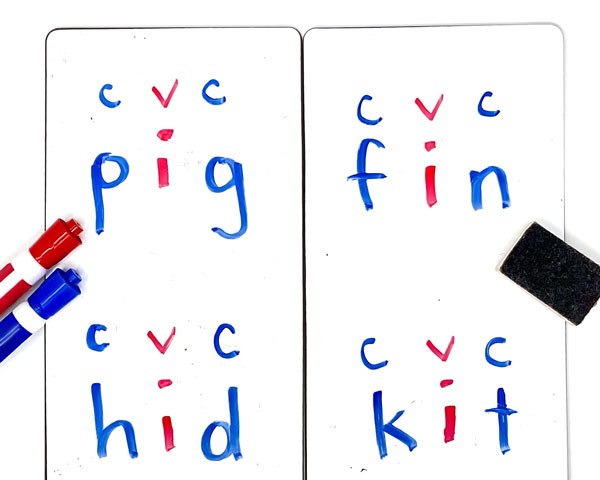

Make sure to remind your students that the “V” in the “C-V-C” pattern stands for “short vowel”. In the case of short I CVC words, the “V” stands for “short I”. Assuming you already taught short A CVC recently before, this should be an easy connection. Still, it’s a necessary point to reinforce, since students will eventually need to differentiate short vowels from long vowels and other variants.
What Are CVC Words for the Letter I?
Let’s get into the word lists!
The following list of words should work well with any lesson ideas you have in mind for teaching CVC words with the short /i/ sound.
There are no words with digraphs or blends in this list. The reason for this is to keep the focus on actual CVC words and not to complicate things with CCVC or CVCC patterns.
This word list, for the most part, does not include nonsense words (such as tid, sif, nim, etc.). Feel free to sprinkle some of these in with your instruction if you’d like.
| Short I CVC Word Family | Short I CVC Words Within Each Word Family |
|---|---|
| -ib | bib, fib, nib, rib |
| -id | bid, did, hid, kid, lid, rid, Sid |
| -ig | big, dig, fig, jig, pig, rig, wig, zig |
| -im | dim, him, Jim, rim, Tim |
| -in | bin, fin, kin, pin, tin, win |
| -ip | dip, hip, lip, nip, pip, rip, sip, tip, yip, zip |
| -it | bit, fit, hit, kit, lit, pit, sit, wit, zit |
| -ix | fix, mix, six |


Use as many words as you need to accomplish the goals for your own lessons. This is also a helpful list to pull up when creating word chains!
How Do You Teach the Short I Vowel in CVC Words?
If you’re in need of some fresh ideas to teach short I CVC words, I’ve assembled a collection of activities that you are welcome to use as is with your students, or adapt to meet your students’ diverse needs.
The lesson suggestions below come from a teaching resource I created called CVC Word Practice for Short I Digital Slides. These slides are NO-PREP and are ready to go for you in your classroom today, should you choose to use them.
If you’d rather not use the slides, that’s okay! You can still implement the techniques and approaches I describe below by using your own classroom materials, along with your creativity.
Use Speech-to-Print and an Embedded Mnemonic to Introduce the Short I Sound
A speech-to-print approach to introducing new sounds is an effective way of making the connection between the familiar and the unfamiliar in a way that is both engaging and completely unintimidating to young or less-proficient readers. That’s why I love this approach when teaching students new sounds.
Here’s how it works. Gather a collection of photographs, clip art, or other imagery of things that begin with the short I sound. If you’re using the digital slides, a selection of images will be provided for you! Here’s one photograph of insects:
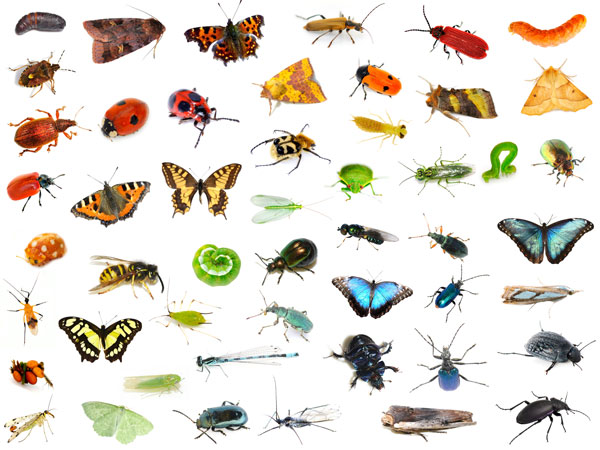

Next, say the word “insect” and then have your kids listen and repeat the word. Do this with four to five photographs of things beginning with the short I sound.
It helps to make your kids aware of how their mouths feel when they form the /i/ sound at the beginning of each word. You can foster this awareness by simply talking about it, showing them a mirror as they make the sound, or sharing a visual:


The repetition of recognizing this short /i/ sound at the beginning of each word will cause your students to make a discovery. They will realize that each word they have repeated has this same sound in common.
Now you’re students brains are primed to see the letter representing the sound. To make this abstract concept into a more concrete connection, try introducing the letter “i” within an embedded mnemonic, like “itch”.
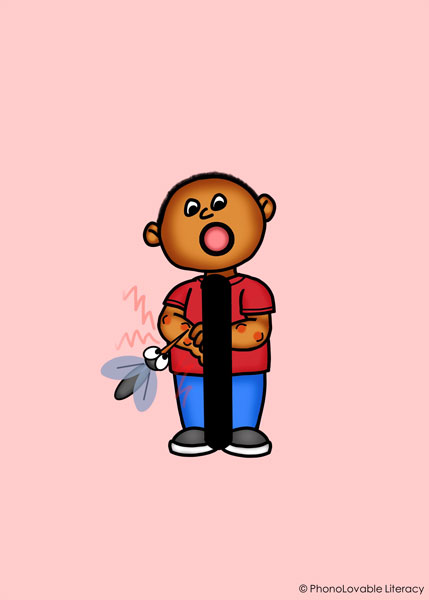

Add a gesture if you’d like, such as pretending to scratch itchy mosquito bites on your arms!
Interested in your own free set of embedded mnemonic letter cards? You can get them here by joining our newsletter!
Rhyming and Phonemic Awareness Warm-Up (Optional)
Here are some tasks you can do with any students who might need some extra practice with rhyming and phonemic awareness.
Distinguishing Words That Rhyme
Present to your students different picture pairs of short I CVC words. For instance, you might show them a picture of a “pig” and another picture of a “wig”. After you say each word, have your students say them too. Next, instruct them to give you a thumbs up if the words rhyme. If they don’t rhyme, it’ll be a thumbs down. The image below shows what this looks like in our slides. You click the slide after the students guess, and then they will see the right answer on the screen. I don’t spend much time teaching rhyming, but I do like to use the skill in occasional warm-up activities to see if it’s challenging to my students or not.
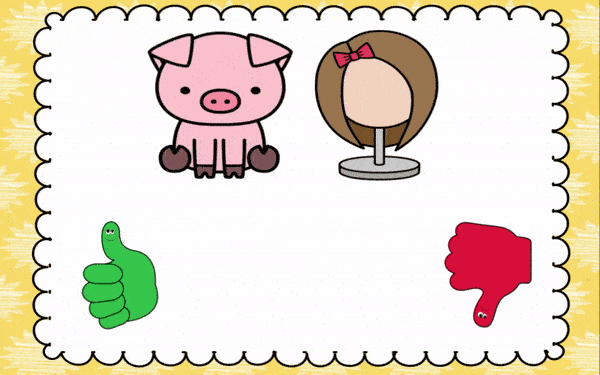

Finding the Next Rhyming Word in a Series
Here’s another rhyming activity. Show students three short I CVC rhyming images. Then show them two more pictures of short I CVC words. One of these pictures should rhyme with the first three, and the other shouldn’t. Encourage your kids to tell you which of the two latter pictures belong in the rhyming series with the first three.
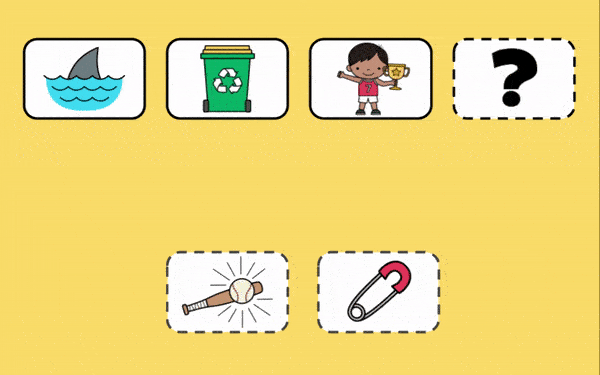

Initial Sound Substitution
Initial sound substitution is an effective way to have your students become familiar with manipulating the sounds in a word to make new words. For example, you can show them a picture of “dip” and have them say the word. Then you would tell them to change the /d/ sound in “dip” to /l/. They should recognize the new word as “lip”. Here’s what this looks like in our slides. You may choose to keep the letters (integrating phonemic awareness with phonics) or you may choose to delete them. The colored dots are editable.
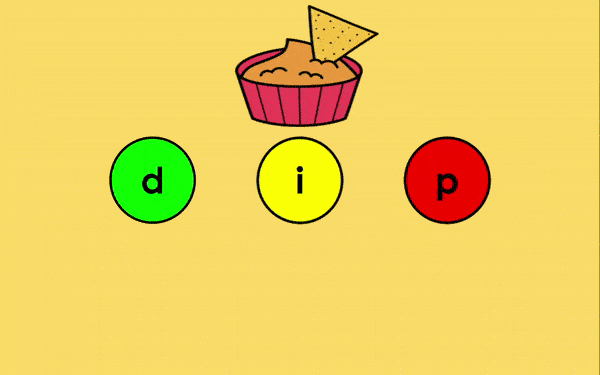

Short I CVC Decoding Practice
You’ve now established a solid foundation, and you’re ready to teach your students how to decode, or read, short I CVC words!
Teach your students to look carefully at which letter card appears and ask them to blend each sound into the next until they’re able to read the word correctly. The embedded mnemonic for the short vowel is included in the first few decoding slides to serve as a research-based support for letter-sound mastery, and is a particularly important support for our at-risk learners.


After students read the word, show them the picture provided on the next slide. To build vocabulary and oral language, I like to use the word in my own detailed sentence (as a model) and then ask one or two students to share their own sentence.
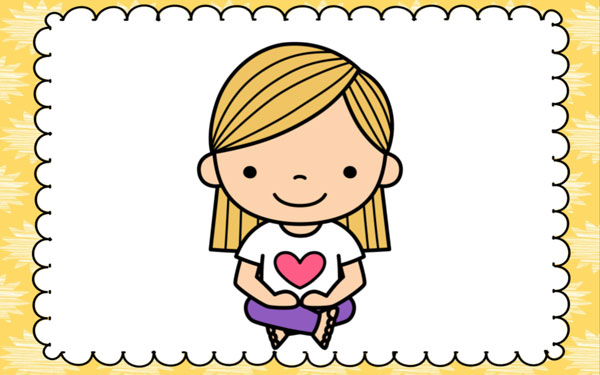

Soon after you teach this, you might want your students to practice their short I CVC word decoding skills independently. You can use these free read and reveal word strips as an extension of the digital slides lessons. They come with an embedded mnemonic of the keyword “itch” OR “iguana”. I’ve also provided plain letters as well to allow for easy differentiation.
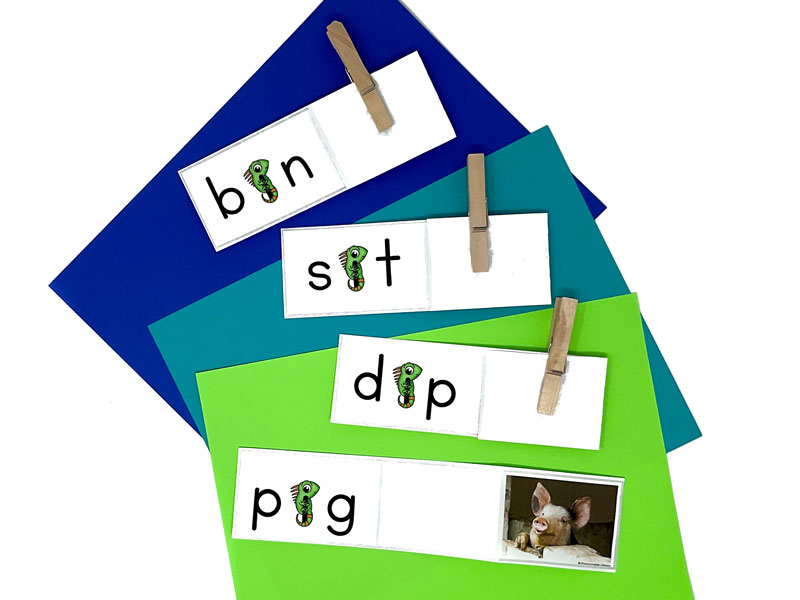

Although they are not part of the same resource, the read and reveal strips are similar to the slides in that the students must decode the word prior to self-checking their answer with the picture.
Reading Short I CVC Words with Accuracy
When your students are a little more familiar, comfortable, and confident with reading short I CVC words, you can test their accuracy by throwing some nonsense words into the mix.
You can see in these slides how words are displayed under a flying saucer. Your students must read the word and decide if it’s a real word or a nonsense word. Real words stay on Earth with the boy, and nonsense or “alien” words go back with the alien to his home. 🙂
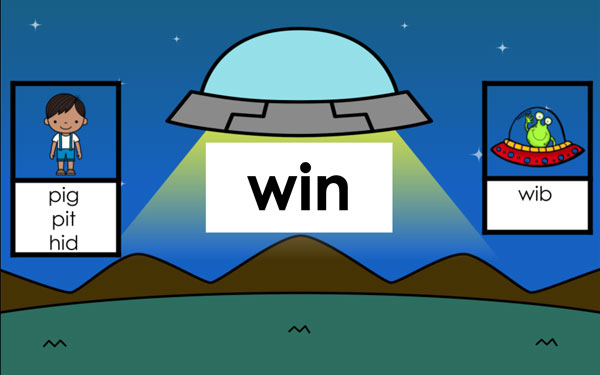

See if your students can come up with a true sentence for the real words.
Short I CVC “I Spy” Phoneme Segmentation (or Blending) Game
For more phonemic awareness, get your students segmenting short I CVC words with a good game of I Spy!
Encourage your students to pretend they are detectives. Have them exchange clues with one another for different short I CVC word pictures in the I Spy scene. Make sure they segment the words that they find by saying, for instance, “I spy a /f/ … /i/ … /n/.”
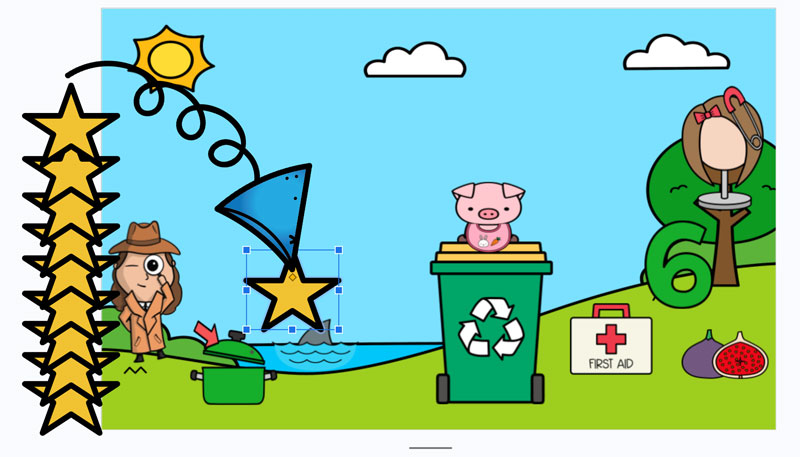

If you’d rather, you can give the clues instead of your students. In this case, you would be the one segmenting, and they would have to blend the sounds to find the right picture.
I’d say it’s OK to model a couple of them, but I recommend having the students do most of the segmenting work, as much as possible. It will prepare them for the spelling activities that come next.
Encoding Practice of Short I CVC Words
Structured literacy lessons always include decoding and encoding practice. Some students will need MANY more practice opportunities than others, so you may break up the slides over as many days as necessary.
Make sure your students have some writing materials. They might have fun doing this activity on a dry erase board and markers. Paper and pencil are great, too.
Once they are ready, you will state the word of a CVC picture with short I, like “dig”.
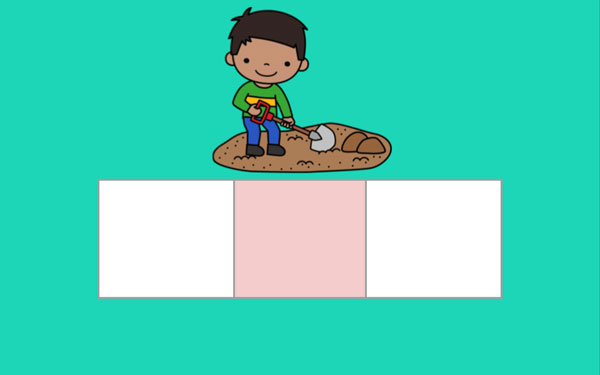

Just like in the I Spy game, students will “chop up”, or segment the word “dig” into its individual sounds. They should reply, “/d/ … /i/ … /g/”. As they recite each sound, you will click your mouse on the slide or hit the Space key to reveal a pointer for each “sound”. Each sound will be represented by a box.
After students say the sounds they hear in the word, they will write a letter to represent each sound. When they are finished, ask to see their spelling of the word. Then, click for the correct letters to show on the screen. Here’s where students can fix any errors. Remind students, if necessary, that mistakes help us learn!
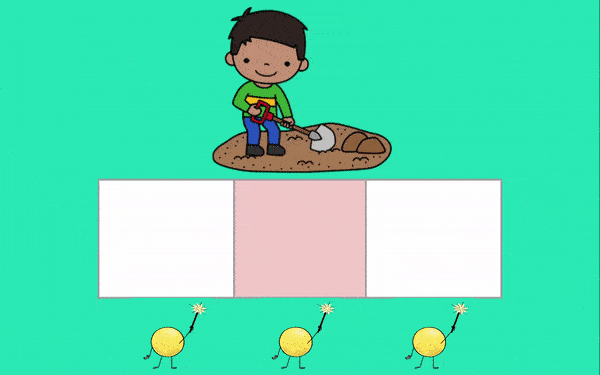

The slides provide 16 of these words for encoding practice.
Short I CVC Mystery Pictures Word Reading Fluency
The short I CVC digital slides include 4 mystery picture word chain slides. These word chains are a motivating way for students to increase their fluency. Plus, the mystery pictures revealed behind the words are fun for kids. 🙂
In order to do this with your children, show them a slide of 9 short I CVC words. The words are listed in the order of a word chain, meaning there is only one letter/sound change from one word to the next.
In addition, there is a mystery picture hidden behind the word list. The picture is a photograph of some CVC word with a middle short I sound. Before your kids start reading the words, tell them about the mystery picture hidden behind them. Have them guess what they think the picture might be.
Next, the kids will read the words from top left to lower right. Since the words are listed in order of a word chain, this will foster and encourage better fluency among your readers. Hit the Space bar or click the mouse as students successfully read each word. Keep going until the entire mystery picture is displayed.
Read Short I CVC Words Decodable Sentences
When your students have had success reading short I CVC words, they’ll likely be ready for the challenge of reading decodable sentences featuring these words.
Ideally, your decodable sentences will include only the types of words you have introduced to them. Therefore, assuming you taught short A before short I, your sentences will have short I CVC words and possibly some CVC words with short A.
If there are any irregular, high-frequency “heart” words that your students haven’t yet been taught, be sure to introduce those that will be in the decodable sentences.
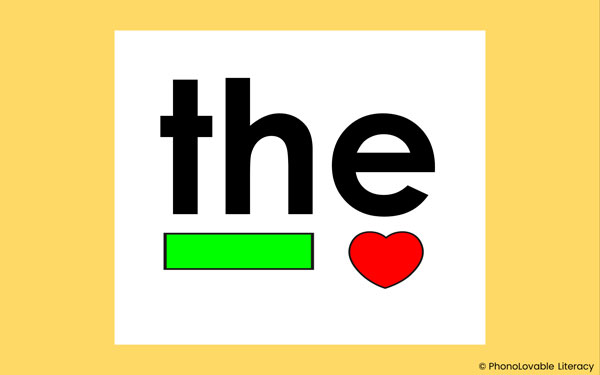

In the image below, you can see how our slides show students each word of the sentence, one at a time, as they are read. As you click the mouse, you can set a pace that is most appropriate for your students.


After the entire sentence is displayed, ask your students to visualize an image for this sentence in their minds. This will promote the habit of building comprehension during reading. Click the slide one final time to reveal a matching picture for the sentence.
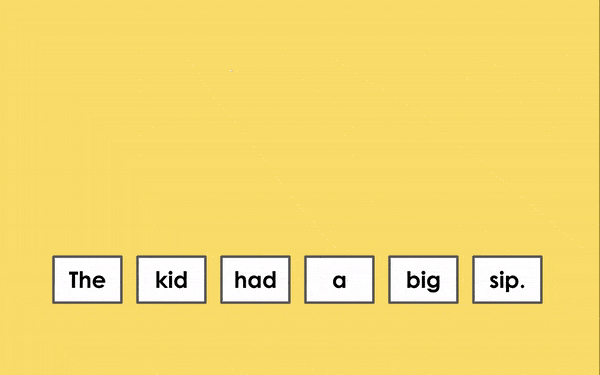

I mentioned that you can set the pace of reading based on your students’ needs. In addition to this, some of our slides feature scoops under some of the phrases. This is a way to help ALL of your students, even those struggling readers, to build fluency as they learn to read sentences.
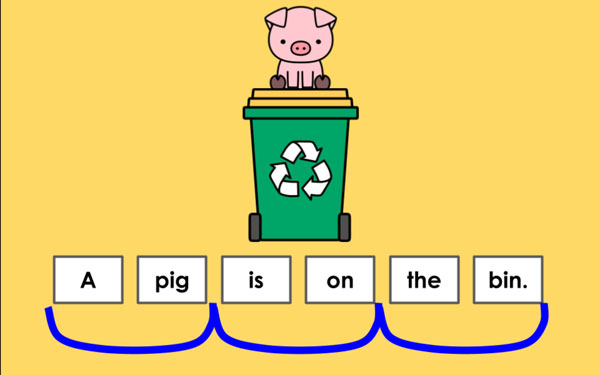

The slides include 8 decodable sentences in all for student practice.
Dictation Sentences That Include Short I CVC Words
What’s better than having your students able to read decodable sentences with short I CVC words? Having them able to read AND WRITE decodable sentences with short I CVC words!
To apply their encoding skills to sentences, have your students grab some writing materials. These materials could be regular pencil and paper or marker and dry erase board.
Dictate a short, decodable sentence that includes a few CVC words with short I. It could be a realistic sentence or a silly sentence, such as, “Kim and the pig sit.”
After dictating the sentence, create a visual on the board with blanks or boxes for each word of the sentence. If using the Short I CVC Digital Slides, you will see blank boxes like this:


Next, give kids the chance to encode, or sound out and spell, the words from the sentence. There might be some “heart” words, but most of the words should be decodable.
When the children have their version of the sentence written down, show them the proper spelling that belongs in each box.
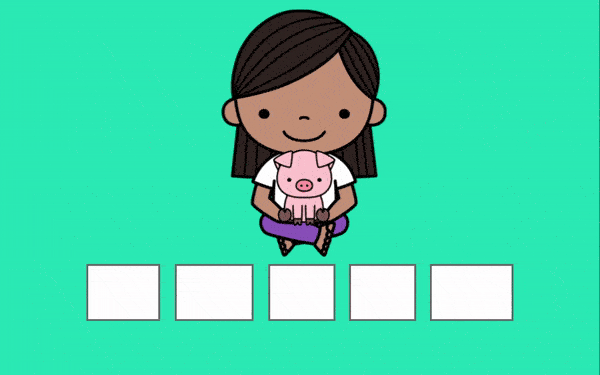

You’ll find 8 sentence dictation practice slides in the short I digital resource. If you wish to have more sentence dictation practice opportunities for short I CVC words, you might be interested in these with real photo writing prompts.
Save Yourself the Prep!
Now you have a list of short I CVC words and nearly a dozen ways to build your students’ mastery of the skill!
Even though I used my Short I CVC digital slides to illustrate the suggestions in this post, you can make these lessons your own with your own materials, if you wish.
If you’d rather skip all the prep work of traditional classroom materials and use the digital slide resource featured in this article, simply click on this link or the image below to get your copy.
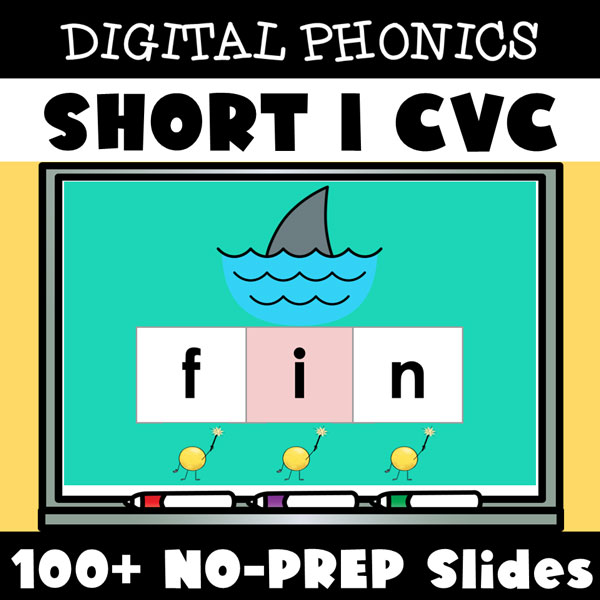

I hope that you and your students will find this resource useful and enjoyable! If you need more Short I CVC resources that are research-based and easy to use, please feel free to take a look at:
- The companion product for this resource that features real photographs
- My short I CVC worksheets activity pack
- My Short Vowel Sounds CVC Word Practice Bundle that includes short I AND the other short vowel sounds
Best of luck to you as you teach short I CVC words and create excited young readers in the process!

